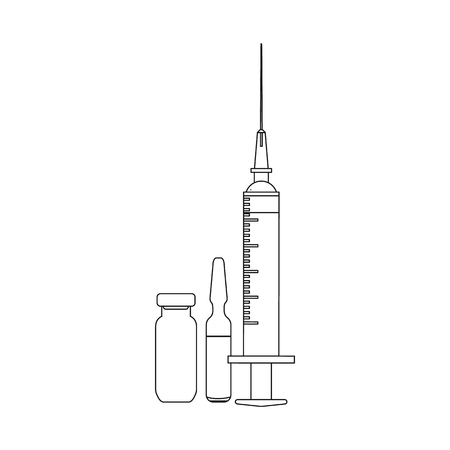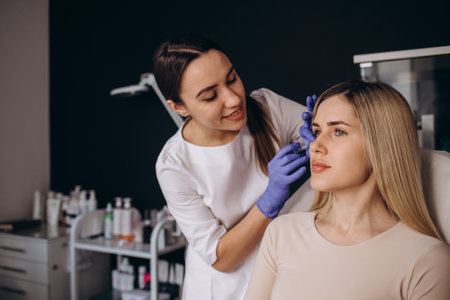Understanding Sun Damage: The British Context
While many associate sun damage with tropical climates, the British context presents its own unique challenges and misconceptions. Despite the UK’s often overcast skies and seemingly mild weather, experts caution that ultraviolet (UV) radiation remains a significant concern year-round. According to leading British dermatologists, intermittent sun exposure—typical of British weekends, holidays abroad, and sunny spells—can be especially harmful, as people are less likely to take consistent protective measures. Moreover, the increased popularity of outdoor activities, such as gardening, walking, and cycling, means Britons may accumulate more sun exposure than expected. The cumulative effect of these brief but intense periods of UV radiation can lead to subtle yet impactful skin damage over time. Recognising how the British climate fosters a false sense of security is the first step in building an effective sun damage repair routine tailored for local lifestyles and needs.
2. Expert Insights: Common Signs of Sun-Damaged Skin
Recognising the tell-tale signs of sun damage is crucial for developing an effective repair routine. According to leading British dermatologists, sun-damaged skin manifests in several characteristic ways, each carrying implications for long-term skin health and appearance. Understanding these indicators not only aids early intervention but also highlights the urgency of proper care in the often changeable UK climate.
Typical Indicators of Sun Damage
| Sign | Description | Why It Matters |
|---|---|---|
| Hyperpigmentation | Dark spots or patches, commonly known as sunspots or age spots, often appearing on the face, hands, and arms. | Indicates cumulative UV exposure and cellular damage; may increase risk of uneven skin tone and cosmetic concerns. |
| Fine Lines & Wrinkles | Premature creasing around the eyes, mouth, and forehead due to breakdown of collagen fibres. | Accelerates visible ageing and diminishes skin elasticity over time. |
| Rough Texture | Skin may feel dry, flaky, or leathery; a result of lost moisture and compromised barrier function. | Makes the complexion appear dull and can exacerbate sensitivity issues. |
| Redness & Blotchiness | Persistent redness or uneven tone, especially in fair-skinned individuals more common in Britain. | Signals inflammation and potential for long-term vascular changes if untreated. |
| Milia & Enlarged Pores | Tiny white bumps (milia) or visibly larger pores due to UV-induced thickening of the skin’s surface. | Aesthetic impact and possible blockage leading to further skin issues. |
The Importance of Early Recognition
UK dermatologists stress that these signs should never be ignored. Even on cloudy days, up to 80% of UV rays can penetrate through, causing gradual damage beneath the surface. Early detection allows for prompt intervention with targeted skincare products—such as antioxidants and retinoids—and lifestyle changes that can halt or even reverse some effects of photodamage. Long-term neglect increases risks not just of premature ageing but also more serious conditions such as actinic keratosis or skin cancer. Building your sun damage repair routine starts with recognising these warning signals and seeking professional guidance when needed.

3. Core Components of a Sun Damage Repair Routine
Cleansing: The Foundation of Recovery
Proper cleansing is the first step in any effective sun damage repair routine, especially for those living in the UK where environmental pollutants can exacerbate skin stress. Leading British dermatologists recommend using a gentle, sulphate-free cleanser that respects the skin’s natural barrier while effectively removing impurities and residual sunscreen. For those with typically British fair or sensitive skin, avoid harsh exfoliants and opt for micellar water or cream-based cleansers to minimise irritation.
Hydration: Replenishing Moisture Levels
Sun exposure often leads to dehydration, even under the UK’s cloudier skies. Incorporating a hydrating toner or essence, rich in humectants like hyaluronic acid or glycerin, helps to restore moisture balance. Dermatologists emphasise layering lightweight hydrating serums before applying a more occlusive moisturiser. For British skin types prone to dryness or sensitivity, fragrance-free and hypoallergenic formulations are best suited to prevent further irritation and support recovery.
Reparative Treatments: Targeted Solutions for Damaged Skin
The cornerstone of repairing sun damage lies in targeted treatments containing ingredients such as vitamin C, niacinamide, and retinoids. These actives help address pigmentation, promote collagen production, and accelerate cell turnover. According to experts, British residents should introduce these ingredients gradually—starting with lower concentrations to gauge tolerance—given the propensity for sensitivity among lighter skin tones common in the UK. Night-time application of reparative serums or creams is particularly recommended, as this aligns with the skin’s natural regenerative cycle.
Additional Protective Measures
Finally, no repair routine is complete without ongoing protection. Even during overcast British days, daily use of broad-spectrum SPF 30+ is essential to prevent further UV-induced damage while your skin heals. Layering antioxidant-rich products beneath sunscreen can provide an added shield against free radicals from both sunlight and urban pollution.
4. Recommended Ingredients and Products
When building an effective sun damage repair routine, leading British dermatologists consistently highlight the importance of specific active ingredients proven to support skin recovery. Choosing the right over-the-counter products, especially those available from trusted British pharmacy brands, can make a significant difference in reversing visible damage and restoring skin health.
Key Ingredients Trusted by UK Dermatologists
- Retinoids (Retinol): Promote cell turnover and stimulate collagen production, helping to reduce fine lines, pigmentation, and rough texture caused by sun exposure.
- Vitamin C (Ascorbic Acid): Acts as a potent antioxidant to brighten uneven skin tone, fade dark spots, and protect against further oxidative stress.
- Niacinamide: Known for its ability to soothe inflammation, improve elasticity, and enhance the skin barrier—vital for repairing sun-damaged skin.
- Hyaluronic Acid: Replenishes moisture lost due to UV exposure, plumping and hydrating for smoother, more resilient skin.
- Ceramides: Support the natural lipid barrier, crucial for preventing transepidermal water loss and enhancing repair processes.
Top Pharmacy Brands & Over-the-Counter Products in the UK
| Ingredient | Recommended Product | British Pharmacy Brand |
|---|---|---|
| Retinol | No7 Advanced Retinol 1.5% Complex Night Concentrate | Boots No7 |
| Vitamin C | The Ordinary Vitamin C Suspension 23% | The Ordinary |
| Niacinamide | CeraVe Hydrating Cleanser with Niacinamide | CeraVe (widely available at Boots/Superdrug) |
| Hyaluronic Acid | L’Oréal Paris Revitalift Filler Hyaluronic Acid Serum | L’Oréal (available at Boots/Superdrug) |
| Ceramides | CeraVe Moisturising Cream | CeraVe (pharmacy staple) |
How to Combine These Actives Safely
For optimal results, British dermatologists recommend introducing one new product at a time and patch testing first. It’s important not to layer all actives together immediately; for example, retinol is best used in the evening while vitamin C is most effective in the morning under sunscreen. Always follow with a broad-spectrum SPF 30 or higher as part of your daily routine to prevent further sun damage.
5. Professional Treatments in the UK
For those seeking to address more pronounced sun damage, advanced clinical treatments offer effective solutions that go beyond over-the-counter products. Across the UK, leading dermatology clinics provide a range of professional interventions designed to restore skin health and reverse visible signs of UV exposure.
Chemical Peels
Chemical peels are a popular choice among British dermatologists for treating sun-induced pigmentation, fine lines, and uneven skin tone. These treatments involve applying a controlled solution—often containing glycolic or trichloroacetic acid—to exfoliate damaged skin layers. In the UK, peels are carefully tailored to individual skin types and concerns, minimising downtime while maximising results. Dermatologist supervision ensures optimal safety and efficacy, making this an accessible yet powerful option for rejuvenation.
Laser Therapy
Laser treatments have become increasingly sophisticated in recent years, with options such as fractional laser resurfacing and intense pulsed light (IPL) widely available throughout Britain. These technologies target pigmentation, broken capillaries, and textural irregularities caused by sun damage. Clinics across London, Manchester, Edinburgh and beyond offer bespoke laser protocols—often combining devices for comprehensive results. It is crucial to consult a qualified practitioner registered with the General Medical Council (GMC) or British Association of Dermatologists (BAD) to ensure the highest standards of care.
Dermatologist-Supervised Options
Beyond peels and lasers, consultant dermatologists may recommend prescription topical therapies, such as retinoids or hydroquinone-based creams, for stubborn hyperpigmentation or actinic keratoses. Cryotherapy and micro-needling are also available at leading UK clinics for targeted repair. Importantly, British dermatologists emphasise the need for personalised treatment plans based on a thorough clinical assessment—this approach helps mitigate risks and delivers tailored outcomes for every patient.
Choosing the Right Clinic
When considering professional treatments for sun damage in the UK, always verify the clinic’s credentials and practitioner qualifications. Look for clinics regulated by the Care Quality Commission (CQC), and seek referrals from your GP or trusted sources. A reputable dermatologist will provide a clear explanation of expected results, potential side effects, and aftercare requirements, ensuring your journey towards healthier skin is both safe and effective.
6. Prevention is Paramount: Sun Protection Advice for Britons
When crafting a sun damage repair routine, it’s vital to remember that prevention remains the cornerstone of skin health—even in Britain’s famously unpredictable weather. While many assume that cloudy skies offer adequate protection, leading British dermatologists emphasise that up to 80% of UV rays can penetrate cloud cover. Therefore, effective sun protection should be a year-round priority, not just reserved for beach holidays or rare heatwaves.
Choose the Right Sunscreen for UK Conditions
Opt for a broad-spectrum sunscreen with an SPF of at least 30, ideally one formulated to withstand the damp and changeable British climate. Water-resistant formulations are particularly useful for those who cycle or walk in drizzle, as they maintain efficacy despite moisture. Remember to check expiry dates—older products may not offer full protection.
Dispelling Common Myths
- Myth: “You don’t need sunscreen in the UK.”
Fact: Harmful UVA rays are present even on overcast days and can accelerate ageing and increase skin cancer risk. - Myth: “Dark skin doesn’t need protection.”
Fact: All skin tones are susceptible to sun-induced damage and should use appropriate sun protection.
Integrating Sun Safety into Daily Life
Apply sunscreen every morning, regardless of forecast, especially on commonly exposed areas such as the face, neck, hands, and ears. For outdoor workers or those spending extended periods outside, reapplication every two hours is advised. Complement sunscreen use with physical barriers: wear wide-brimmed hats, UV-blocking sunglasses, and light but tightly woven clothing during peak sun hours (11am–3pm).
A Holistic Approach to Prevention
Combine topical protection with smart habits—seek shade during midday, use umbrellas when sitting outdoors, and advocate for workplace policies that support regular breaks from direct sunlight. By prioritising prevention alongside repair strategies recommended by British dermatologists, you’ll foster resilient skin and reduce the long-term impact of UV exposure, no matter what the British weather brings.


